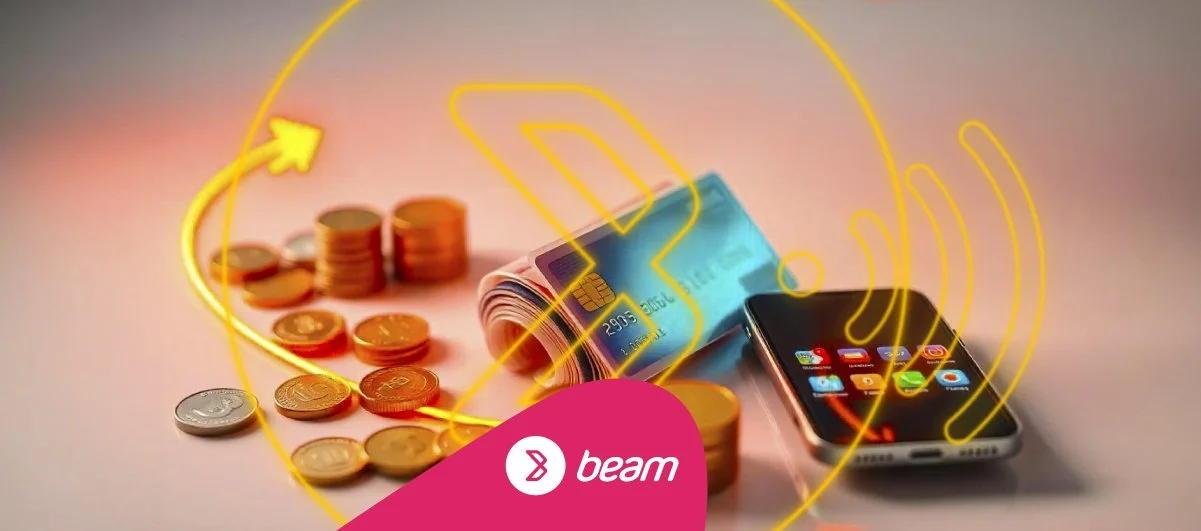From Plastic to Contactless: The Payments Revolution and Its Sustainable Impact on the Planet and the Economy
From Plastic to Contactless: The Payments Revolution and Its Sustainable Impact on the Planet and the Economy
Over the past few decades, payment methods have evolved dramatically. What began with coins and banknotes transitioned to plastic cards and is now moving toward contactless and digital solutions. This transformation is not only technological but also environmental, economic, and social. At a time when sustainability is at the forefront of global discussions, tools like Beam Wallet stand out for their efficiency and positive impact, redefining the role of payments in today’s world. Europe, often seen as a leader in environmental and technological policies, still clings to plastic cards. Meanwhile, other regions of the world, such as Asia and parts of Latin America, have already embraced more modern and sustainable payment solutions. This article explores how the shift from plastic to contactless payments is transforming economies, aiding the environment, and offering a vision of the future of global finance, with a spotlight on the indispensable role of Beam Wallet.
Plastic cards dominated the financial landscape for decades, offering convenience and security compared to cash. However, the mass production of these cards has created significant problems: environmental impact due to the production of millions of tons of plastic, often non-recyclable; planned obsolescence, as cards have a short lifespan and require frequent replacements; and hidden costs, with banks and financial institutions spending millions annually on card production and distribution, expenses often passed on to consumers. With the rise of digital technologies, the relevance of plastic cards is increasingly questioned. While they offer practical benefits, they are no longer the most efficient or sustainable solution.
Contactless payments, enabled by technologies such as NFC (Near Field Communication) and QR codes, represent the next step in the evolution of finance. This innovation eliminates the need for physical cards, allowing transactions to be conducted directly through mobile devices or digital wallets like Beam Wallet. Contactless technology offers several benefits: environmental sustainability by reducing reliance on plastics and other non-renewable materials; convenience and speed, as transactions are completed in seconds without the need to enter PINs or sign receipts; and advanced security protocols that protect consumer data, reducing fraud. Additionally, contactless payments provide a significant economic impact. Financial institutions and merchants can drastically cut costs associated with producing physical cards, while consumers save money by avoiding fees related to lost or damaged card replacements, promoting both efficiency and savings.
Despite its reputation as a leader in sustainability and innovation, Europe has been slow to transition to fully digital payments. Many consumers and financial institutions still view plastic cards as symbols of prestige and security. In European countries, the design and durability of cards are often seen as reflections of banking sophistication. However, this perception contrasts with the advancements seen in regions like Asia, where digital wallets are already widely adopted. While countries such as China, South Korea, and India are leading the way in implementing contactless and digital payments, many European markets remain hesitant. This creates a paradox: a continent concerned with sustainability still invests in technologies that perpetuate the use of polluting materials.
Beam Wallet stands out as a solution that not only eliminates the need for plastic cards but also redefines how payments are made. It is more than a digital wallet; it is a platform that combines efficiency, sustainability, and financial intelligence. Beam Wallet integrates contactless payments, real cashback, and automation and intelligence, offering solutions that transform the market. Contactless payments are conducted quickly and securely, real cashback incentivizes responsible spending, and analytics tools enable personalized user experiences. Moreover, Beam Wallet completely eliminates the need for physical cards, directly contributing to reducing plastic waste. Its fully digital operation consumes fewer natural resources, aligning with global sustainability goals.
The production of plastic cards generates significant carbon emissions. By adopting digital solutions like Beam Wallet, we can drastically reduce these impacts. The production and distribution of cards come with hidden costs that are passed on to consumers. With digital wallets, these expenses are eliminated, benefiting both institutions and clients. With continuous advancements in technology, it is clear that the future of payments will be dominated by digital solutions. Tools like Beam Wallet not only lead this transformation but also set the standards for future generations. While Europe still struggles to balance tradition and innovation, other continents can benefit from the experience of platforms like Beam Wallet. Its efficiency, sustainability, and positive impact are clear examples of how progress can be achieved without compromising the environment.
The transition from plastic cards to contactless solutions is not merely a technological evolution; it is an urgent necessity to ensure a sustainable and economically viable future. Beam Wallet is a brilliant example of how innovation and sustainability can go hand in hand. For consumers, merchants, and investors, adopting these tools is not just an intelligent choice but an essential step to ensure success in a constantly changing world.

